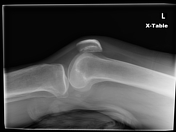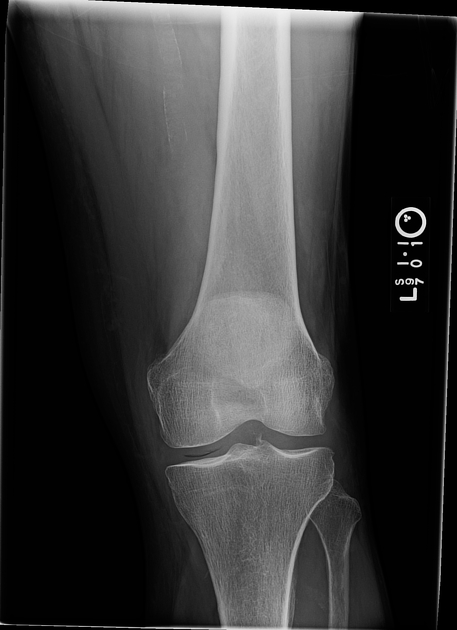Presentation
Bilateral knee tenderness following motor vehicle collision
Patient Data




There is curvilinear lucency in the medial compartment of the knee compatible with vacuum phenomenon. There is no acute fracture or dislocation. There are no degenerative changes. Mild irregularity of the lateral tibial spine appears chronic. No definite knee joint effusion is seen.
Case Discussion
When traction is applied to a large joint, gases like nitrogen in the surrounding tissues/blood may diffuse into the joint due to reduced intra-articular pressure. This manifests as a curvilinear lucency on radiographs and is known as vacuum phenomenon. This is generally considered physiologic without any clinical significance. Degenerative disease may produce vacuum phenomenon in certain joints. It is important to exclude other causes of intra-articular gas such as traumatic arthrotomy. More localized intra-articular gas has been reported in the setting of meniscal tear.




 Unable to process the form. Check for errors and try again.
Unable to process the form. Check for errors and try again.